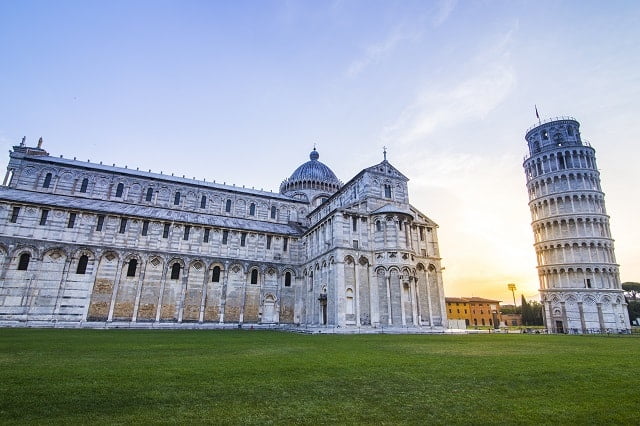
Italians are known for many things, but such a highly respected crafts as Italian cuisine deserves its own place in the spotlight. Italian cuisine has long branches of art, history and culture throughout different regions of Italy. From decadent pasta to thin-crust pizzas, Italian cuisine is hugely popular for its seasonal ingredients and its simplistic approach.
Italian cuisine is deeply rooted in its history and art. Its roots can be traced back to Ancient Rome, with Ancient Roman gastronomy being heavily influenced by Greek culture.
The rich culinary tradition of Rome was further developed by the spread of Roman empires through Mediterranean countries bringing their recipes with them. During the Middle Ages, monasteries were the keepers of much wonderful food with drinks like wine-wine from wineskins – developing in popularity, bread widely consumed and gathering together a variety of local ingredients and transforming them into original dishes that still exist today.
Furthermore, regionalism has played an important role in molding Italian food into what it is today as each region has their own unique approach to cooking which helps create a vast array of pies, pastas sauces,, olives oil vinaigrettes etc that vary depending on where you go in Italy. This variety allows for experimentation within traditional recipes resulting in interesting outcomes that have become timeless classics.
Aside from the obvious enjoyment that Italians gain from indulging in good food dining out or hosting meals at home holds great value culturally. From locals congregating at corner trattorias to host large family meals everything is done as an act both celebration and reflection within these communities.
It’s essential to acknowledge this sense of sociability revolving around dinner tables since it’s integral part of maintaining their cultural heritage. As Italians continue to carefully preserve their culinary traditions they also provide us all with some delicious inspiration which too often gets overlooked nowadays when we are bombarded with unhealthy fast food choices everywhere we look.
A Timeless Favorite
Italian cuisine is one of the most familiar and beloved types of food around the world. It has remained popular for centuries due to its unique combination of flavours, ingredients and technique. In Italy, simplicity is key in both cooking and baking; olive oil, fresh herbs and high-quality ingredients are essential components in most recipes.
The two main regions that help define Italian food are the north and south: Northern Italy’s climate is quite abundant with its regional meats such as prosciutto and salami, while Southern Italy focuses on seafood dishes. Regional specialties like pesto genovese from Genoa in the Lombardy region still remain favorites today.
With its delicious flavour combinations, rich history, and luxurious textures, Italian food is a beloved choice for occasions such as romantic date night dinners or large family gatherings alike. The art of homemade pasta making has remained a traditional practice over time too; filled pastas such as ravioli can be made with any filling depending on personal taste.
Lasagna was traditionally used to pair with red sauce but variations can be made using white sauces, vegetables, cheeses or meats for a healthier version.
Along with different styles of pasta recipes available to make at home, there’s no denying that Italian food has been adopted in many countries’ culinary traditions around the world due to its mild yet complex flavours that come together effortlessly. It embodies warmth through comfort foods like risotto alla milanese or pizza which have become staples amongst local restaurants everywhere.
Apart from being deeply rooted on tradition Italian cuisine also embraces new ingredients from other global cuisines. Not only does this add another level of complexity to dishes providing an interesting mix it also speaks volumes about how far reaching Italian food’s influence really is.
This allows for unlimited creative expression when plating up meals beautifully for all to see without sacrificing authenticity or minimizing quality-a feat that continues to leave people in awe no matter how long they have lived near Rome or Milan.
It’s impossible not to find something you love within the wide repertoire that encompasses Italian cuisine; whether it’s slow cooked tomato sauce simmered for hours topped onto bruschetta or light carpaccio garnished simply with lemon juice and extra virgin olive oilthere really is something for everyone when exploring Italian fare over time-each more delicious than the last.
Narrowing in on Italy
Italian cuisine is among the oldest and most varied in the world. Italy was home to a variety of civilizations, evoking influences from both Europe and the Mediterranean Sea. This combination of influences has led to some of the most renowned and beloved dishes that we enjoy today. From north to south, Italian cuisine varies greatly due to the differing climates, cultures, resources, and agricultural practices that evolved from each civilization.
The Alps run through much of northern Italy, stretching across many regions including Piedmont and Lombardy. This mountainous region produces plentiful dairy products such as butter and cheese which are used in many different dishes. In these regions, you can try dishes such as fonduta, a savory Piedmontese dish made with melted cheese and truffles, or tagliolini alla Robiola; a type of thin egg pasta served with Robiola cheese – hailing from Lombardy.
Central Italy includes 6 main regions: Lazio (Rome); Abruzzo; Marche; Emilia-Romagna ;Tuscany; Umbria. Interesting combinations like sweet and savoury come together as traditional staples in this region’s cuisine like Abruzzese Arrosticini; skewered lamb meat cooked over an open flame eaten with honey for balance alongside Umbrian flavours created by herbs such as rosemary and sage used in roasted meats such as porchetta.
Central Italy is also known for its amazing fresh pastas such ricotta ravioli “del plin” which are tiny delicate pillows stuffed with ricotta/spinach filling made within Emilia Romagna’s borders.
Finally traveling through southern Italian gastronomy leads you straight into extreme warmth & brightness. Heading all the way down south brings us to sunny Calabria where various seafood specialties dominate menu items like colourful fish stews like “Ciupitielli di Pesce”. Sicily brings what it’s famously known for – sweeter dishes.
Something worth mentioning when talking about Sicily is their lavish use of citrus fruits including lemons being present in many traditional plates like their classic Gelo di Mellone e Limoni, cold lemon-melon pudding traditionally enjoyed during summertime due to its refreshing rosy aroma. The complex amalgamation of flavors within Italian food cannot be expressed enough.
It reflects abilities shaped by centuries of diverse rule & influence which grants us a taste out of two millenniums old a culinary tradition brimming with unique flavors & experiences unrivaled across the globe.
Grandiose Flavor
Italian cuisine is known the world over for its rich, flavorful combinations of fresh, seasonal vegetables, grains and proteins. The base ingredients of Italian cuisine have been present in Italian regions for centuries, and each area has its own unique take on the country’s classic dishes. Italians fully understand how to create depth and fullness of flavor through the use of special ingredient combinations.
When examining the regionality of Italian cuisine, it’s clear that olive oil is key to any traditional dish from north to south. This fragrant oil can add a hint of acidity or sweetness and reflects the creativity that is so integral to Italian food culture. Often used together with garlic as a marinade or dressing, olive oil helps enhance flavors found in other key ingredients like tomatoes, onions, olives and capers.
The combination of vegetables also plays an important role in creating distinct flavor profiles in Italian dishes. Start with a base mixture of onion, carrot and celery (known as soffritto) fermented cheeses such as parmigiano reggiano are often combined with grilled or sautéed vegetables like radicchio, broccoli rabe or mushrooms to add nutty notes that help amplify other existing flavors.
In addition to these vegetable-focused flavor enhancers, herbs like basil, parsley oregano provide savory top-notes that reinforce classic components while adding an herbal dimension for complexity.
Spices are featured prominently throughout Italian recipes as well and are used whenever salt alone may not be enough to bring out desired notes. Spices such as cinnamon are often used both sweetened desserts such as biscotti and savory mains including stews and braises.
Meanwhile chile flakes offer up bursts of heat when added at the end of cooking just prior to serving pasta dishes or proteins like chicken or fish. Red pepper flakes add subtle hint smoky sweetness which can help bring out complex layers fruity undertones when combined with olive oil based dressings draped over bitter greens salads.
Iconic Entrees
Regional Differences
Authentic Italian cuisine varies depending on the region. For example, dishes from the south of Italy, such as those found in Naples and Sicily tend to feature heavier use of pasta varieties like rigatoni and lasagne, set against a backdrop of vegetables cooked with olive oil, while northern regions such as Lombardy and Piedmont focus more on rice-based risottos and soups. In both cases however, iconic main dishes remain a firm fixture across all parts of the country.
Pasta Dishes
Italy is renowned for its culinary prowess when it comes to pasta-based dishes. These can range from traditional three-course meals featuring fresh egg noodles, to elaborate sauces that leverage unique combinations of ingredients like meat, cheese or seafood.
Examples include Spaghetti Carbonara; a delicate yet flavoursome blend of bacon, eggs and cheese; Penne Genovese: an aromatic tomato sauce with olives and herbs; as well as Penne all’Arrabbiata; a spicy combination of garlic sugo (tomato sauce) chillies and Parmesan cheese.
Meaty Classics
Italian cuisine extends far beyond just pasta-based dishes however – iconic meaty options are also popular mainstays amongst locals. Saltimbocca siciliana is a simple dish consisting of veal pairs wrapped in paper thin slices of prosciutto ham; served usually alongside vegetables or roasted potatoes for added flavour and texture.
Other classic examples include Ossobuco Milanese: melt in your mouth braised veal shank accompanied by choice accompaniments that vary from tomatoes to shavings of truffle, as well as Stinco di Maiale al Vino Rosso – richly flavoured ham hock cooked until tender in red wine jus or sauce.
Authentic Antipasti
Italian cuisine is renowned for its elegant and delicious dishes. From homemade pasta, luscious sauces, to succulent seafood, Italian cuisine is one of a kind. First courses or entrées are incredibly important: they set the tone for the entire meal and often feature authentic antipasti as appetizers. Authentic Italian antipasti consist of a variety of small dishes such as cheese and cured meat that accompany typical Italian breads, bruschetta, focaccia, and tarallini.
The most common type of cured meats in an Antipasto platter often include prosciutto ham, salami, and Parma ham. These are usually served with fresh Pecorino cheese or seasonal vegetables such as tomatoes and olives which add a touch of color to your plates.
Generally in Italy each region specialises in their own type of cured meat or pickles specific to them – so it’s always worth trying out the local produce. Other traditional dishes that may be served as an Antipasto include lots of salads – varying from simple tomato salad to Caprese salad (made with mozzarella cheese) which is popular all over Italy for its freshness and balance between ingredients.
Aside from these typical ingredients there’s also Marinated fish (such as anchovies), Frittata di cipolle e carciofi (onion & artichoke omelette), Arancini(Rice Balls), Zucchini flowers stuffed with ricotta cheese and many more. Don’t forget about desserts too.
Traditional Sicilian desserts such as Cannoli and Cassata are mouthwatering delights sure to satisfy your sweet tooth after a delightful antipasto platter For those who prefer something less sweet Tiramisu is also a well-known favorite with Italian roots making it the perfect addition to the table. All these amazing flavors can be paired with some great wines which can vary depending on the region or personal preference.
The variety available when it comes to authentic Italian dishes makes every meal exciting and unique – you’ll never have the same dish twice. So why not try out your own selection of delicious accompaniments next time you host a dinner party? You won’t regret it.
Classic Dolci
Here in Italy, traditional Italian cuisine consists of some of the best dishes known to man. The entrées that come out of Italian kitchens are satisfying and delicious, but it’s when diners make it too dessert where things truly become amazing. Among the donuts, cake, ice cream and pastries lies an even greater classic – dolci (sweets).
Originating from the days of ancient Rome throughout all the regions of Italy, the recipe for these classic desserts have stayed relatively unchanged for centuries. Every region offers something unique with regard to dolci but there are some staples found all over Italy such as the cannoli di ricotta, Flan di cioccolato and Tiramisu.
Cannoli di Ricotta
The first dessert people usually have in mind when they think of Italian sweets is cannoli. A crunchy pastry shell stuffed with a creamy sweetened ricotta filling make it one unbeatable combination.
Cannolis can be filled with a variety of flavorings including chocolate chips or cherries, but most are just flavored with candied orange peel or citrus zest commonly used in Sicilian cooking. They’re often served drowned in an icing sugar icing glaze and topped off with more candied orange peels or nuts at special occasions like weddings or birthdays for that extra sweetness.
Flan di Cioccolato
Next on the list has to be flan di cioccolata which is essentially a chocolate covered custard pie spiced up with cinnamon or nutmeg depending on personal tastes here in Italia.
What sets this dessert apart from most other pies is its gooey texture beneath a layer often rare yet so satisfying dark chocolate glaze coating everything inside it’s thin crispy crust; something bakeries across the country never fail to deliver making why flan di cioccolata will always remain nothing short of legendary in Italian kitchen circles.
Tiramisu
Tiramisu (translated literally meaning “pick me up”) is quite possibly one of Italy’s most beloved desserts aside from gelato. Variations have sprung up everywhere now such as cupcake-size tiramisù’s as well as large cakes crafted out solely of layers cheese mixtures and ladyfinger cookies soaked tightly in espresso coffee and liquor all tied into one charming package symbolizing comfort and indulgence here in Italia.
Using traditional recipes laden with mascarpone cheese, this evergreen classic home-made treats garners love all year round well beyond its homeland borders cementing its place firmly amongst world renowned Italian dolci since its creation.
Fascinating Facts on Italian Cuisine
Italy’s diverse landscape makes it the ideal melting pot of flavors and cuisines, which can be seen perfectly in Italian cuisine. There are hundreds of regional dishes that have evolved over time, making Italian food truly unique. As Italians travel around the world, they bring their recipes with them which has helped to make Italian food so popular and widely enjoyed. Here are some fascinating facts about Italian cuisine that you may not know before.
The earliest recorded reference to pasta appears in 1154 in Sicily, but historians believe that Italians had been eating pasta for centuries before this. One theory is that Marco Polo brought pasta back from China during his travels there in the 13th century.
Before tomatoes were introduced to Italy, pesto was usually made with nuts or parmesan cheese instead of basil. Today, pesto is typically served over pasta or used as a pizza topping. It should come as no surprise then that Italy produces more olive oil than any other country in Europe; the majority of the olives used in producing this delicious condiment come from Puglia and Tuscany regions.
Another fun fact about Italian cuisine is that it heavily focuses on seasonality and freshness of ingredients when crafting delicious dishes (especially tomatoes). What’s more, many classic recipes are passed down from generation to generation by family members who become experts at making family favorites perfect every time. This means that you can still get your hands on traditional Italian recipes today if you know how to look for them.
Finally, no matter where you go in Italy their famed gelato dessert is sure to follow. From creamy pistachio to zesty lemon flavored gelato, these frozen treats are sure to satisfy any sweet tooth. Plus, due to its high fat content real Italian gelato melts slower than American ice cream which means you can enjoy it for longer without having it all drip away like a puddle below your plate.




